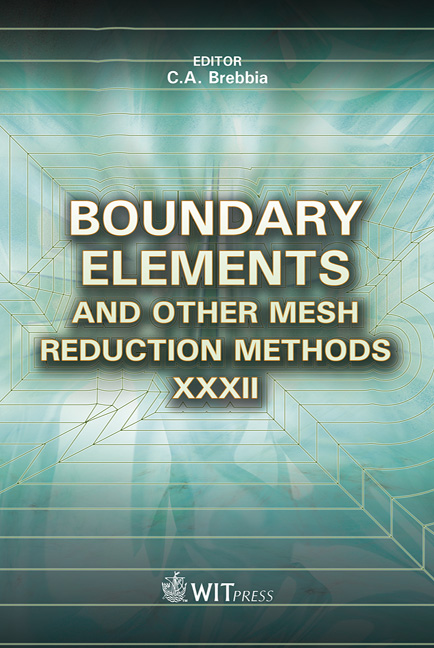Inverse Scattering Analysis For An Elastic Half Space Based On A Fast Volume Integral Equation Method
Price
Free (open access)
Transaction
Volume
50
Pages
9
Page Range
111 - 119
Published
2010
Size
2,397 kb
Paper DOI
10.2495/BE100101
Copyright
WIT Press
Author(s)
T. Touhei, T. Takagishi, Y. Wajima & K. Kuranami
Abstract
A method for the inverse scattering analysis is presented for an elastic half space. The volume integral equation method is introduced here to reconstruct fluctuation of the medium from scattered waves observed at the free surface. The Born approximation is applied to the volume integral equation to formulate the equation for the inverse scattering analysis. The equation is solved by means of the Krylov subspace iteration method and the fast generalized Fourier transform. Several numerical calculations are carried out to investigate the solutions of the inverse scattering analysis. Keywords: inverse scattering problem, volume integral equation, elastic half space, fast generalized Fourier transform, Krylov subspace iteration method, Born approximation. 1 Introduction The analysis of scattered waves is an important issue in fields such as earthquake engineering, non-destructive testing and identification of energy resources. The integral equation methods have been efficient tools for both the forward and inverse scattering analysis. For example, Colton and Kress (1998) presented a survey of a vast number of articles on forward and inverse scattering analyses [1]. Among the integral equation methods, the volume integral equation known as the Lippmann-Schwinger equation has an advantage in that it presents a mathematical relationship between the fluctuation of the medium and scattered wave field. As a result, a number of examples of applications of the volume integral equation are increasing recently in spite of its deficiency, that is the requirement of a huge scale
Keywords
inverse scattering problem, volume integral equation, elastic half space, fast generalized Fourier transform, Krylov subspace iteration method, Born approximation





